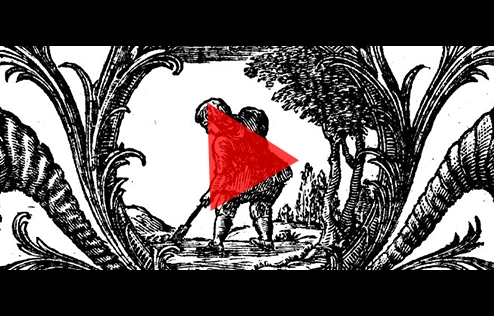1
A šator ćeš načiniti od deset zavesa od tankog platna uzvedenog i od porfire i od skerleta i od crvca; i po njima da budu vezeni heruvimi.
2
Jedan zaves neka bude dvadeset i osam lakata dug i četiri lakta širok; svi zavesi da budu jedne mere.
3
Pet zavesa neka se sastavljaju jedan s drugim, i pet drugih zavesa neka se sastavljaju jedan s drugim.
4
I načini petlje od porfire po kraju jednog zavesa, gde će se krajevi sastavljati, i tako načini po kraju drugog zavesa, gde će se krajevi sastavljati.
5
Pedeset petalja načini na jednom zavesu, a Pedeset petalja načini na kraju drugog zavesa, gde će se sastavljati s drugim, a petlje da budu jedna prema drugoj.
6
I načini pedeset kuka od zlata, da zapneš zavese jedan za drugi kukama, i tako će biti šator jedan.
7
I načini zavese od kostreti za naslon nad šatorom; jedanaest takvih zavesa načini.
8
Zaves jedan neka bude trideset lakata dug, a širok četiri lakta; tih jedanaest zavesa da su jedne mere.
9
I sastavi pet zavesa zajedno, a šest ostalih zajedno, na dvoje ćeš previti šesti zaves s prednje strane naslonu.
10
I načini pedeset petalja na stražnjem kraju prvog zavesa, gde će se sastavljati, a pedeset petalja na kraju drugog zavesa, gde će se sastavljati.
11
I načini kuka bronzanih pedeset, i zapni kuke na petlje, i sastavi naslon, da bude jedno.
12
A što je više u zavesa na naslonu, polovina zavesa što pretiče, neka visi na stražnjoj strani šatoru.
13
I lakat s jedne strane a lakat s druge strane što ima više u dužinu u zavesa na naslonu, neka visi šatoru sa strane i tamo i amo, da ga zaklanja.
14
I načini pokrivač naslonu od koža ovnujskih crvenih obojenih, i svrh njega pokrivač od koža jazavičijih.
15
I načini za šator daske od drveta sitima, koje će stajati pravo.
16
Deset lakata neka bude svaka daska duga a podrug lakta široka.
17
Dva čepa neka budu na dasci, jedan prema drugom najednako; tako načini na svakoj dasci za šator.
18
Tako načini daske za šator, dvadeset dasaka na južnoj strani.
19
A pod dvadeset dasaka načini četrdeset stopica od srebra: dve stopice pod jednu dasku za dva čepa njena, i dve stopice pod drugu dasku za dva čepa njena.
20
A na drugoj strani šatora prema severu dvadeset dasaka.
21
Sa četrdeset stopica srebrnih, dve stopice pod jednu dasku i dve stopice pod drugu dasku.
22
A na zapadnoj strani šatora načini šest dasaka,
23
I dve daske na dva ugla od šatora.
24
I one neka se sastavljaju ozdo i neka se sastavljaju ozgo biočugom; tako neka bude u obe koje će biti na oba ugla.
25
Tako će biti osam dasaka sa stopicama srebrnim, sa šesnaest stopica, dve stopice pod jednu dasku, a dve stopice pod drugu dasku.
26
I načini prevornice od drveta sitima, pet za daske na jednoj strani šatora,
27
I pet prevornica za daske na drugoj strani šatora, i pet prevornica za daske na zapadnoj strani šatora do oba ugla.
28
A srednja prevornica da ide preko srede dasaka od jednog kraja do drugog.
29
A daske okuj zlatom, i biočuge im načini od zlata, da se kroz njih provuku prevornice, a i prevornice okuj zlatom.
30
Tako ćeš podignuti šator po slici koja ti je pokazana na gori.
31
I načini zaves od porfire i od skerleta i od crvca i od tankog platna uzvedenog, i po njemu neka budu vezeni heruvimi.
32
I obesi ga o četiri stupa od drveta sitima, okovana zlatom, sa kukama zlatnim, na četiri stopice srebrne.
33
I obesi zaves o kuke, i unesi za zaves kovčeg od svedočanstva, da vam zaves rastavlja svetinju od svetinje nad svetinjama.
34
I metni zaklopac na kovčeg od svedočanstva u svetinji nad svetinjama.
35
I namesti sto pred zaves a svećnjak prema stolu na južnoj strani šatora, da sto stoji na severnoj strani.
36
I na vrata naslonu načinićeš zaves od porfire i od skerleta i od crvca i od tankog platna uzvedenog, vezen;
37
I za taj zaves načinićeš pet stupova od drveta sitima, koje ćeš okovati zlatom, sa kukama zlatnim, i salićeš za njih pet stopica od bronze.







